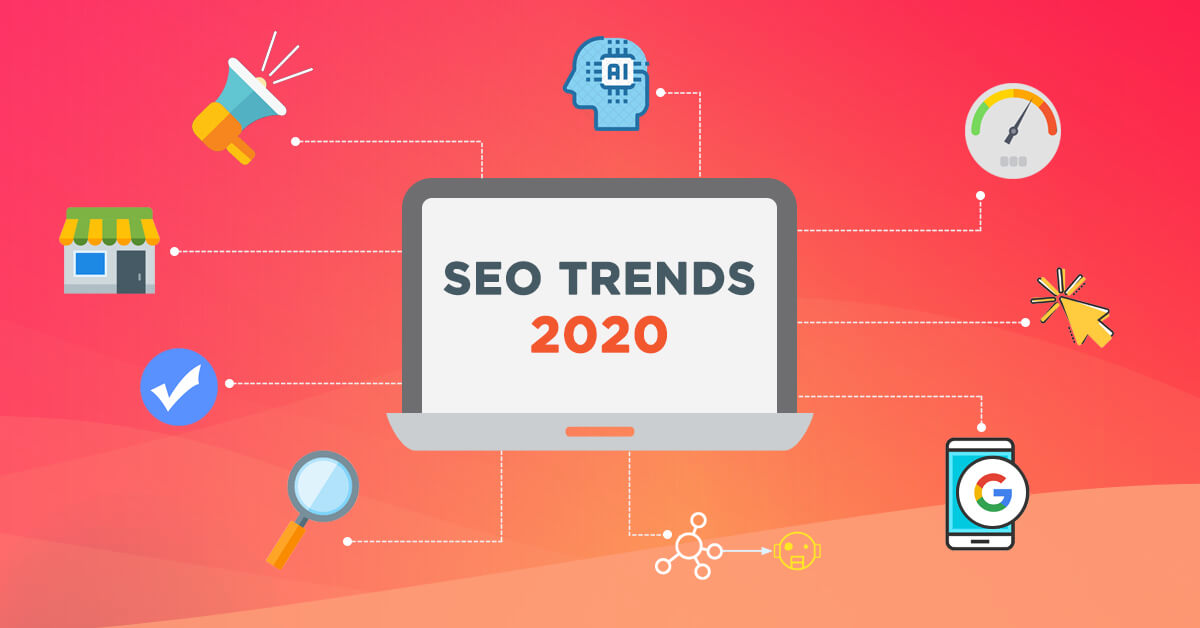
The SEO landscape is evolving with every passing day, week, month or year. Today, SEO is no longer about building spammy backlinks or ranking a website in a couple of weeks by stuffing keywords. Google’s updates and algorithms have become more sophisticated and now can easily catch those who try to manipulate search results by practicing unethical marketing tactics. In other words, you have to be familiar with clever yet ethical trends that will influence search results in 2020. So without further ado, let’s take a look at some of the best strategies that will help your website get noticed in SERPs.
1. Featured Snippets To Drive More Clicks

Featured snippets are search results that usually stand atop organic results in SERP, and are commonly referred to as “zero-click searches.” They are helpful in increasing your website traffic, conversions, brand awareness, keywords ranking, website authority, and much more.
To leverage the benefit of featured snippets and attract over 50% of clicks, you have to answer the questions commonly asked by users or provide a detailed comparison between two popular products, technologies or solutions related to your niche. The detailed information you provide should be structured in a way that both users and Google love, i.e., a list or bullet points for quick summarization, header tags such as H2, H3, H4, etc., and a table of contents.
In short, zero-click searches present you an opportunity to drive a huge amount of traffic to your site. Usually, featured snippets depend upon the content quality and the way you have presented it.
2. Mobile-First Indexing

Did you know? Over 50% of traffic in the United States in 2018 was from mobile devices. Since then, this figure is on the rise. With the spike in mobile traffic year-over-year (YOY), Google has introduced mobile-first indexing and announced that it will start favoring mobile-friendly sites in organic search results. In other words, mobile-first indexing means that Google will primarily consider the mobile version of a website for indexing and ranking.
Earlier, Google used to consider the desktop version of a webpage when determining the relevance of the content to a user’s search query. In a nutshell, if your website is not mobile-optimized and offers a poor user experience, you may observe a significant drop in your search rankings on both the mobile and desktop devices.
If you want to grow your business & traffic and improve your website rankings in SERPs, we suggest you do the following:
- For smaller screen sizes like mobile devices, you should go for bigger buttons, larger typography, and uncluttered menus.
- Aim for simple and clear navigation since both UI and UX plays a great role in improving user engagement.
- Always make sure your website looks good on mobile and loads at blazing fast speed.
- Invest in good hosting and always ask for more bandwidth from your hosting service provider. Fast loading speed should be your topmost priority since it directly impacts your bounce rate.
You can check the speed of your website by using Google’s PageSpeed Insights. This easy-to-use tool not only provides a speed score of your site on both mobile and desktop but also gives recommendations for improvement areas.
Google Experimental Speed Report
Another interesting thing that you need to know is that Google has officially introduced the speed report in search console. Under the enhancements section in Google webmaster, you will find the speed (experimental) tab that shows an overview of your website’s speed report by pulling data from the Chrome UX report.
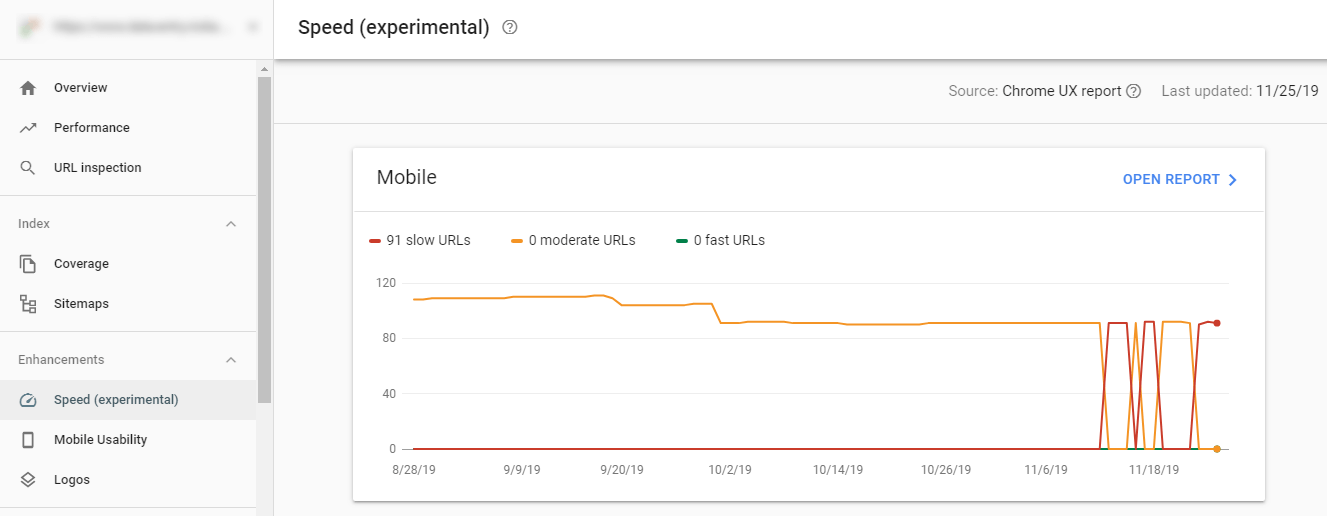
The report also groups the total links of your website into 3 different categories including slow, moderate, and fast URLs. If you dive deep into this report, you will get to know the issues for slow URLs. On clicking any issue, you will be redirected to the Page Speed Insights tool that will tell you improvement areas to fix that issue.
On the other hand, if you want to check the mobile-friendliness of your website, we suggest you use Mobile-Friendly Test – Google Search Console tool. When you run your website through this tool, you will get to know how intuitive it is for a mobile user. Besides this, you will also get some recommendations for fixing errors and usability improvements.
Mobile optimization is not to be taken lightly and moreover, it’s not a one-time activity. Ideally, you should do it weekly for the pages that were recently published and the ones that are losing out on traffic and visibility.
3. Semantic Search and Intent Optimization
Gone are the days when Google used to show results for exact-match search queries. Today, it has evolved and doesn’t just consider the exact keywords entered in the search box. In fact, it focuses on understanding the user’s search intent and contextual relevance to deliver the most accurate search results. All thanks to artificial intelligence, natural language processing, and Google BERT Algorithm October 2019 Update (as of November 2019).
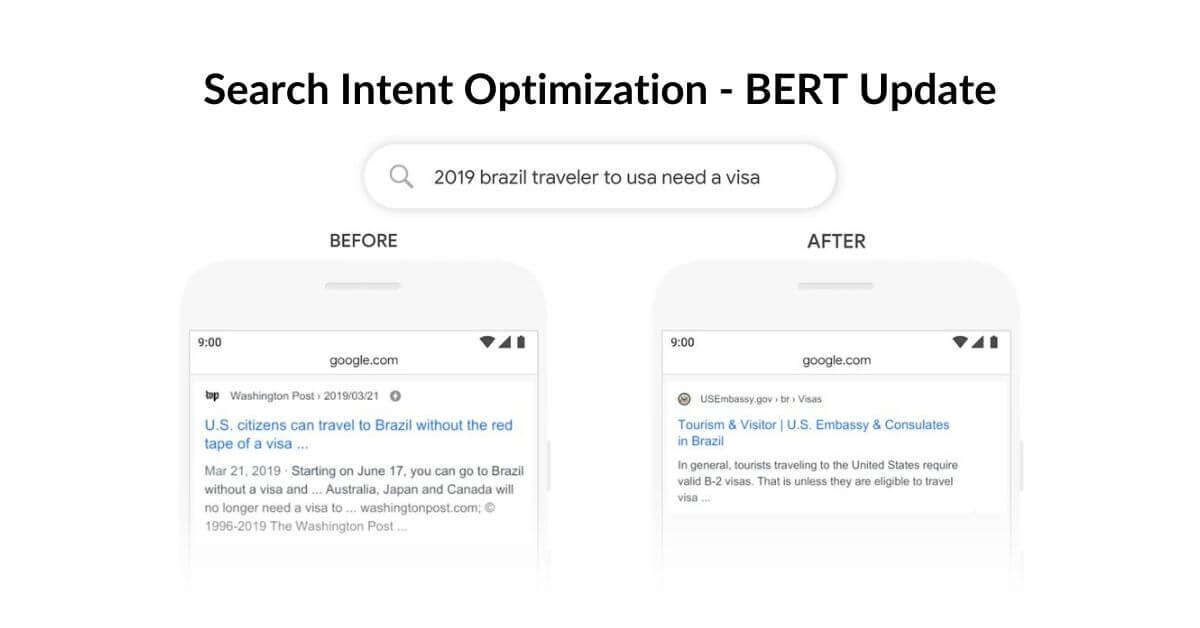
For instance, a search query for ‘2019 brazil travelers to USA need a visa’ before the BERT update shows results about a U.S. citizen traveling to Brazil, not the other way around. However, after the October update, Google has started giving more importance to prepositions like “to” and “for” to understand the context of words used in a search query. In this case, the preposition “to” and its connection with other words in the query is important to understand a user’s search intent and contextual relevance.
In a nutshell, Google is able to understand this subtle difference with BERT update and knows that prepositions like ‘to” and “for” matter a lot in longer, more conversational queries.
Here’s how you can optimize your website content for semantic search and intent optimization:
- Get your hands on tools like Buzzsumo’s Question Analyzer, Text Optimizer or Answer the Public to find out the common questions, words or phrases that people are using when searching queries related to your niche.
- This is a time-consuming activity, but these are the building blocks of your content.
- Now, incorporate the same questions or phrases in your content to address the user intent.
- Be comprehensive yet engaging while writing content. The more you write on any given topic, the better are your chances to rank higher in SERPs. But more doesn’t mean you include irrelevant information just for the sake of increasing the word count.
4. Embrace Local SEO – It is The Next Big Thing
Local SEO is not something new, you may have heard about it before. However, its impact has started showing in the last few years. With the dramatic rise in mobile traffic, local SEO has become vital for businesses both large and small alike.
According to Google, 46% of all searches on Google have local based intent, which means people are actively looking for products or services in their nearby area. Another interesting thing about local searches is that almost all search queries have terms like ‘near me’, ‘best’ or ‘top’ in the keywords. This indicates that local searches have a stronger buying intent and people are likely to buy from you or visit your location soon.
Here’s how you can optimize your business for local SEO:
- Claim, verify and optimize Google My Business (GMB) Listing, Apple Maps Listing, and Bing Places for Businesses.
- Ask customers to share their experience by leaving reviews and ratings on your listings. This will build credibility and increase the trustworthiness of your business.
- For example, lots of local businesses boost their listings by giving rewards such as discount coupons in exchange for photos, videos and honest reviews of their businesses on platforms such as Google My Business. This not only gives them a loyal customer base but also brings new prospects organically.
- Perform local keyword research related to your products, services, and locations.
- Create local landing pages for different services and incorporate the local keywords in your content from whom you want to rank for.
- Make sure to optimize your content for voice search as it’s becoming more prevalent. Today, 58% of people use voice search when searching for local business information.
- Create a listing of your company on local online directories like Yelp, Yellowpages, Manta, Angie’s List, and Hotfrog, etc and ensure NAP consistency across all directories. This will help customers discover your company with ease.
- NAP consistency is an acronym that stands for ‘Name, Address, and Phone Number’. The NAP for your online business should be accurate and consistent across the web. Having correct NAP increases your business chances of ranking well in Google’s local search results.
5. Rich Snippets
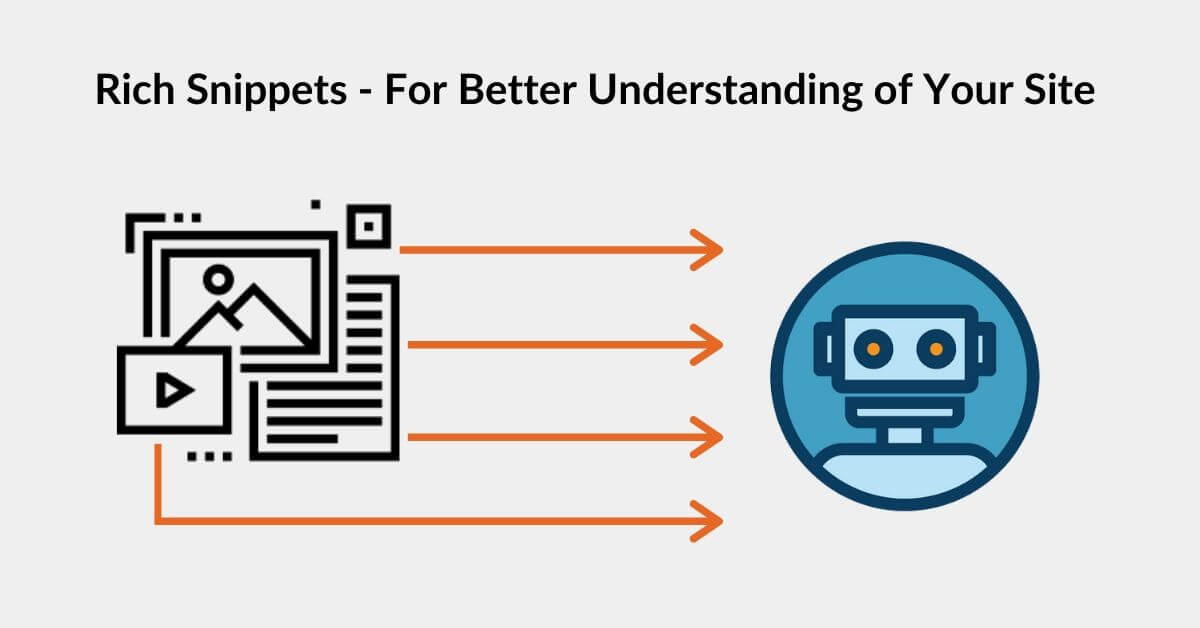
Another SEO trend that can help your website get noticed in 2020 is the use of rich snippets. It is a structured data markup that site owners implement on their existing HTML to provide search engines additional information including reviews, product pricing, contact details, star-rating, and much more. This helps them better understand the intent of your content. Though Google has said that it doesn’t consider rich snippets as a ranking factor but implementing the same on your site can stand out your organic search results and increase the CTR of your site.
In the words of John Mueller from Google:
Structured Data can make it easier to understand what the page is about, which can make it easier to show where it’s relevant (improves targeting, maybe ranking for the right terms).
So, it’s safe to say that structured data does affect your ranking but not directly.
Types of Rich Snippets
Recipe Snippet: When you add recipe structured data to your food blogging site, it will showcase an image of the dish, star ratings, reviews, cooking time, instructions, and much more.
Review Snippet: Adding a review schema on your site allows you to show star ratings (out of 5) and reviews of an individual person or aggregate reviews from all users.
Sitelinks Searchbox Snippet: When you add this schema, it allows users to search your site content right from the Google organic search results.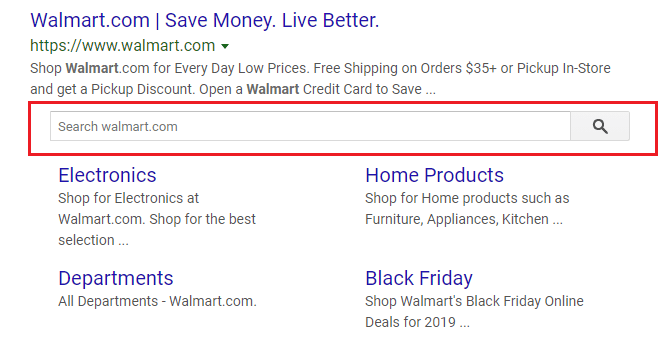
Video Snippet: By using the video snippet schema, you can increase the search presence of your video and make it appear in a carousel. It also helps the search engines better understand the content of your video.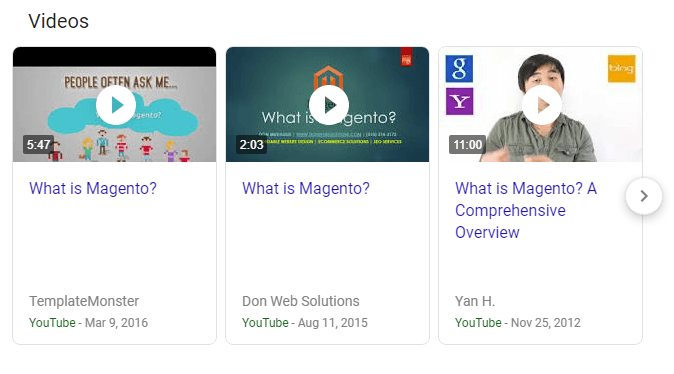
Formats for Structured Data
There are mainly three structured data formats that Google supports: JSON-LD, Microdata, and RDFa.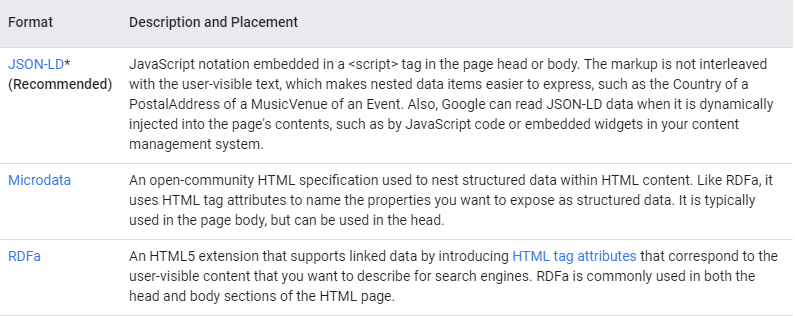
However, Google always recommends using JSON-LD format for structured data since it is presented in a JavaScript format.
Benefits of using JSON-LD for Structured Data
- Supported by all major search engines
- You can embed it anywhere on the webpage
- HTML doesn’t need to be changed
- Web developers can reuse it since it follows the JSON syntax
- It loads asynchronously and doesn’t impact the performance of a page
Tool for Creating and Testing Rich Snippets
Writing a clean and error-free code for rich snippets can be challenging for newbies. If you are creating snippets for the first time, you should always consider using tools for accuracy and quality. Though there are many tools available online for building structured data markup for your site, we suggest you use Google’s own structured data tool, i.e. Markup Helper. This easy-to-use tool allows you to create structured data markup without the need to learn to code. The best part of using this tool is that it’s free to use and offers a complete gamut of schema types.
Once you have a code ready with you, validate it through Google’s structured data testing tool. This will help you ensure whether Google can read your structured markup data. To run a test, all you have to do is paste the code in the code snippet box and click on the ‘run test’ button. If it shows no error, you can insert that same code in your existing HTML. Now, take the live URL of your site and run the test again by pasting the link in ‘FETCH URL’. If it comes up clean, you can rest assured of your structured data markup.
6. Voice Search
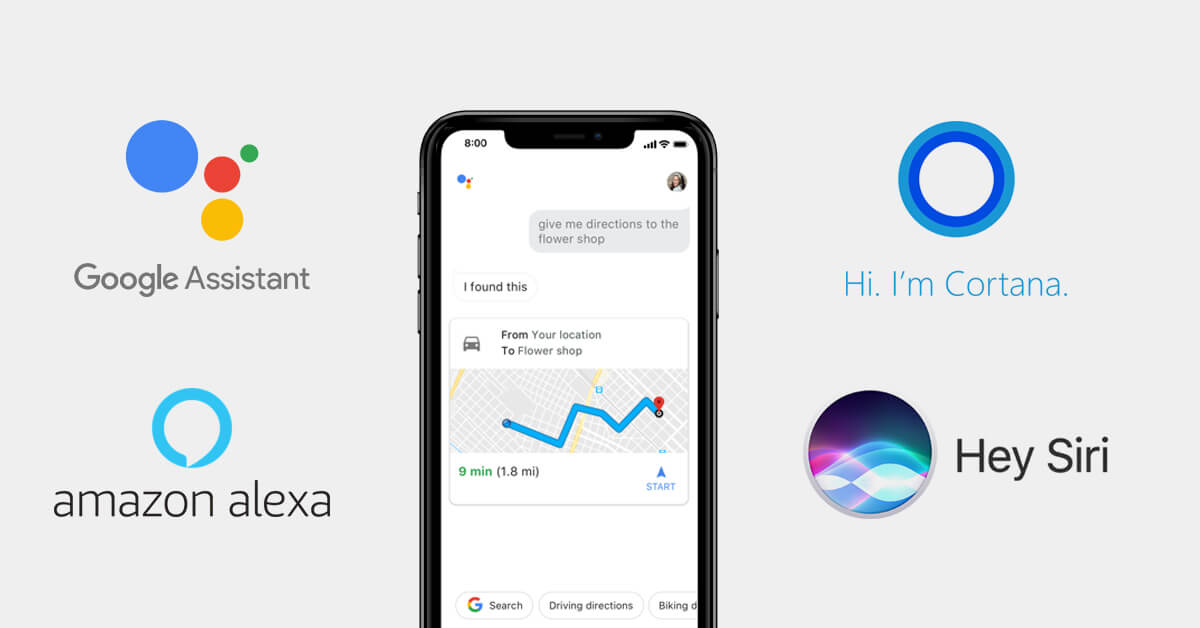
With the rise of voice-enabled devices like Amazon Echo, Google Home, etc., voice search is becoming quite popular among people of all ages. Today, around 41% of adults use voice search at least once a day and this figure is expected to rise in the next few years. According to a recent report by ComScore, 50% of all online searches will be done through voice. The U.K.based analyst firm, Juniper Research has forecasted that there will be 8 billion digital voice assistants in use by 2023. This clearly indicates that optimizing your website for voice search should be in your priority list if you want to drive more organic traffic to your site and dominate the top position in organic search results.
When it comes to optimizing your site for voice search, you have to keep in mind that users search queries via voice instead of typing it, so naturally, the query would be longer and more conversational than regular text searches. The searches usually comprise words like ‘near me’, ‘best’ or question words such as “what”, “which”, “how”, etc.
How to optimize your site for voice search:
- Structure your content by using lists, tables of content or bullet points for all your subheadings. Better structuring is not only helpful for better visibility in SERPs but also results in better user engagement stats which further send user behavior signals to the search engine algorithms,
- Create question-based FAQ pages. You may refer to ‘People also ask’ section that appears on the first page of search results to gather what people usually search for,
- Incorporate long-tail keywords or phrases in your content. To find out the same, you can consider the bunch of phrases that are present at the bottom of every search result page,
- Try to use a more conversational language. Tailor your content for longer and conversational queries using tools like Answer the Public, FAQFox.com or Text Optimizer,
- Think about user intent when creating content. Try to provide clear and concise answers to questions asked by users,
- Include H2, H3 and H4 subheads to address frequently asked questions. This may help you appear in featured snippets,
- Use structured data markup (schema) on your site as it helps the search engines better understand your site structure and its content,
- Make your website responsive and mobile-friendly,
- Restructure your existing pages to make it voice search-friendly. This also includes the pages that are already ranking and driving traffic,
7. Fast Page Loading Speed (For Both Static & Dynamic Websites)
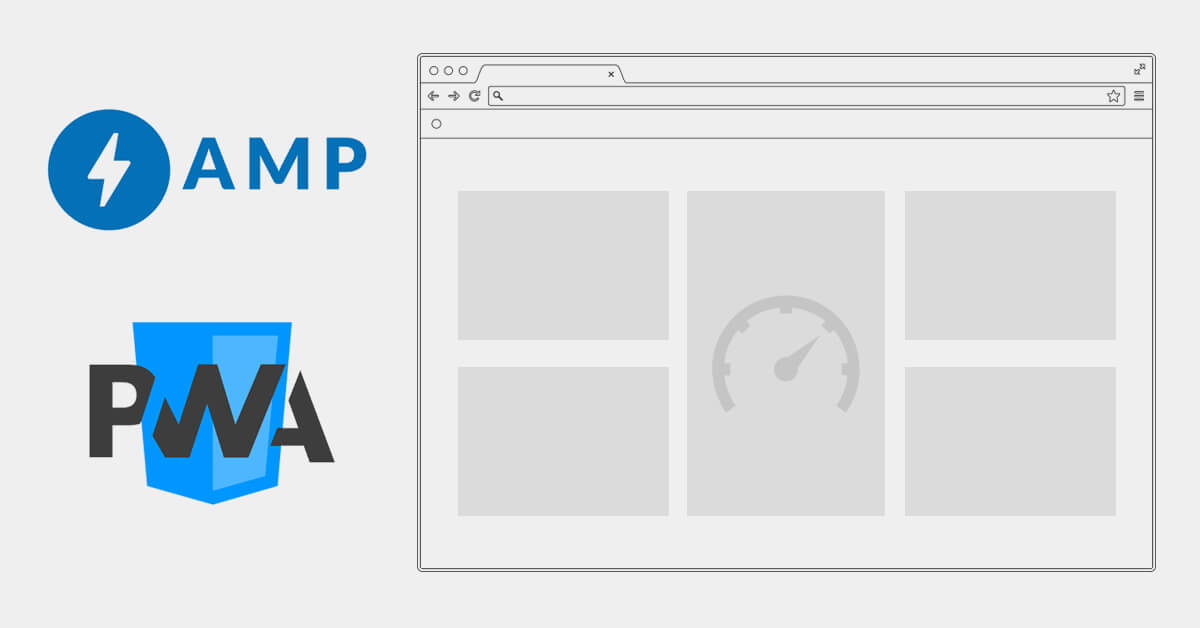
Regardless of how appealing your website design is or how unique your content is, if your website has a poor loading speed you will never be able to beat the competition. According to a recent survey conducted by Unbounce, 32.9% of users wait for around 4-6 seconds before they leave a page while just 5.3% of visitors wait for 11 to 13 seconds.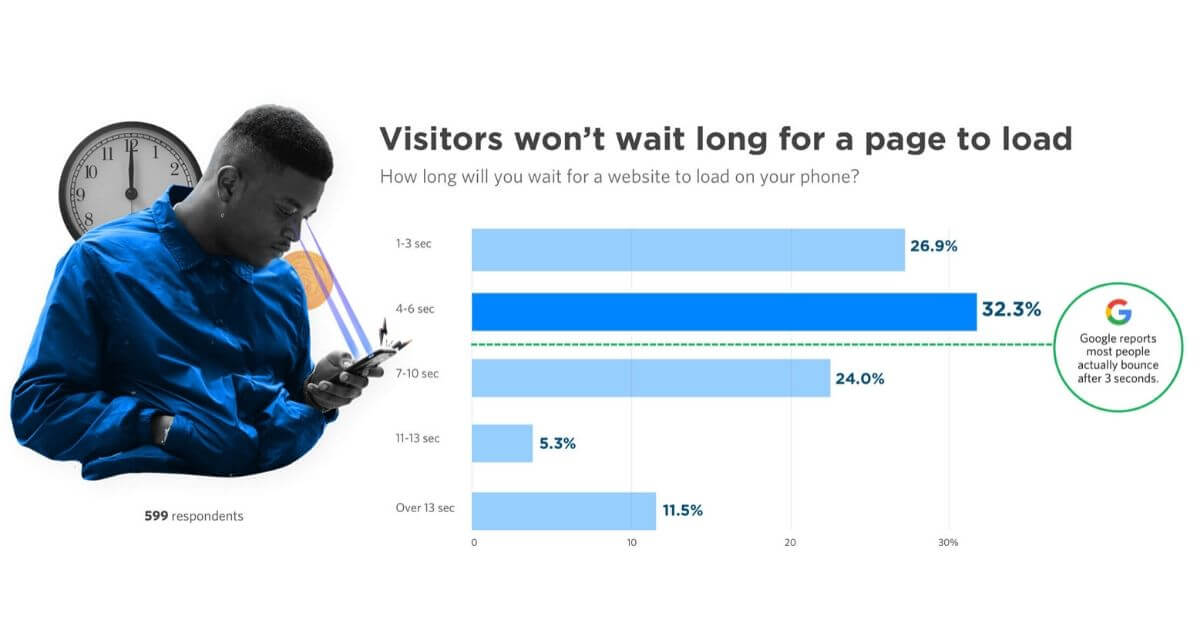 Furthermore, sites that load in 2 seconds or less have an impressive average bounce rate of 9%. On the other hand, sites that load in 5 seconds have a much higher average bounce rate i.e. around 38%. A high bounce rate clearly indicates the poor user experience rendered by your site. The reasons for the high bounce rate could be a complex site structure, under optimized content, technical errors, irrelevant content or the most prominent one – slow page loading speed.
Furthermore, sites that load in 2 seconds or less have an impressive average bounce rate of 9%. On the other hand, sites that load in 5 seconds have a much higher average bounce rate i.e. around 38%. A high bounce rate clearly indicates the poor user experience rendered by your site. The reasons for the high bounce rate could be a complex site structure, under optimized content, technical errors, irrelevant content or the most prominent one – slow page loading speed.
Moreover, the slow page load speed not only affects search engine visibility of your website but also the user engagement. And user engagement directly affects your business growth.
It doesn’t matter if you have a static website or a dynamic one, a slow page load speed will definitely keep your target users away.
One of the easiest ways to fix the slow website speed is to embrace accelerated mobile pages (AMP).
What is AMP?
Accelerated Mobile Pages (AMP) is an open-source project developed in collaboration with Google and Twitter to facilitate smooth, fast, and better browsing experiences on mobile devices. In simple words, this open-source framework can be used to render lightweight browsing experiences to mobile users, which in turn increases user engagement and reduce data usage. You can identify AMP pages in organic search results by looking at the lightning bolt icon.
Why Do You Need Accelerated Mobile Pages (AMP)?
Accelerated mobile pages (AMP) not only reduces your website page load time by delivering content that matters at blazing fast speed but also improves your mobile search rankings. It has several advantages like lower bounce rate, better UX, better server performance, not to mention faster page load speed.

According to the Ericsson mobility report, 70% of the population of the world will be using smartphones by 2020. Therefore, it becomes important for every merchant to make their website AMP ready. However, the sad part is that almost a quarter of marketers have not heard of the AMP framework, though it receives strong support from the tech giants like Google and Microsoft.
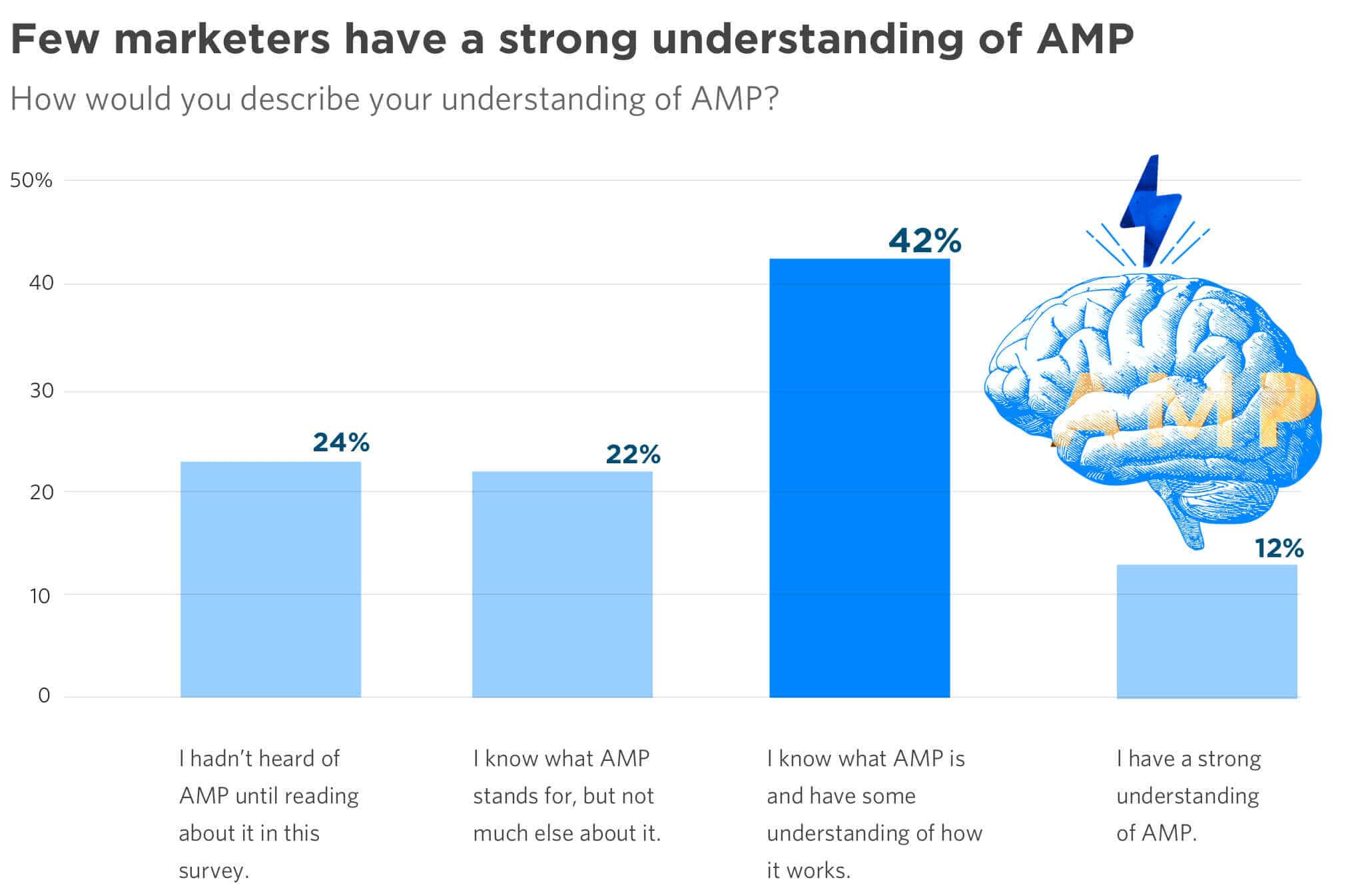
What’s more concerning is that about 57% of marketers are not even thinking of implementing AMP anytime soon, owing to the limited developer capacity or lack of understanding.
Some Other Benefits of Accelerated Mobile Pages (AMP)
1) Better Chances of Ranking on Google Search Carousel: By embracing AMP for your site, you increase the possibility of your website appearing in the Google Search Carousel that showcases top stories on the first page of search results. Since the carousel appears at the top of all search results, websites that appear in Google Search Carousel drive the maximum users’ attention, clicks, and engagements.
2) Better ROI on Ads: Accelerated Mobile Pages (AMP) is developed with an aim to support a multitude of ad formats and deliver a faster-loading ad experience. This simply means that there will be a higher ad viewability rate, which in turn helps advertisers derive better ROI on their ad spending.
The caveat with AMP is that it uses basic HTML and CSS. Hence, it’s meant for static websites only. For example, AMP is more suitable for a news/media publishing website as compared to an eCommerce store.
Why is AMP Not Suitable for Dynamic Websites?
AMP is a big hit for news/media websites and nobody can deny this fact. However, when it comes to dynamic sites like eCommerce websites, accelerated mobile pages (AMP) may not be a good choice to consider. Wondering why so? Here are a few reasons supporting the same:
- Users can quickly leave your store due to poor user-experience
- Hard to implement on dynamic pages, websites or eCommerce stores
- Poor support for dynamic pages and features like faceted search and shopping cart pages
- Investment required for the development
- Lower eCommerce adoption in the industry
- Third-party JavaScript is not supported
- Not good for branding
- Ads bring lower revenue due to various limitations
- Minimal styling and design options
- Difficult to manage
- A well-optimized site can run faster than native apps
How to Make Your Dynamic Websites Faster?
The answer is Progressive Web Apps (PWA). Coined by Google in 2015, PWAs are basically mobile websites that deliver an app-like experience on web browsers. Even some PWAs do offer the option to install them on your smartphone as a bookmark on the home screen.
In order to be called a PWA, a web app has to be:
- Fast – In terms of animations and processing user queries,
- Reliable – Load faster without any hiccups even in low network situations, and
- Engaging – Provide a better user experience than a dynamic mobile responsive website.
Why Progressive Web Apps (PWAs) Are Rising Faster
Speed: PWAs load faster than many mobile applications; thanks to the caching feature that saves a copy of your site pages and serves it immediately when requested by users. Besides this, they offer smooth navigation, which not only helps in retaining users but also improves the engagement.
No need to download: Unlike a traditional mobile app that requires users to find it in an app store, wait for the download, allow some permissions, and then it’s ready to use. With progressive web apps (PWAs), users can visit your site from a URL and then launch the app in just a single tap. No waiting, no downloading.
Offline access: The best part of PWAs is that they can send push notifications and background updates to users even if they don’t have internet access.
3 Examples of Progressive Web Apps (PWAs) Adoption
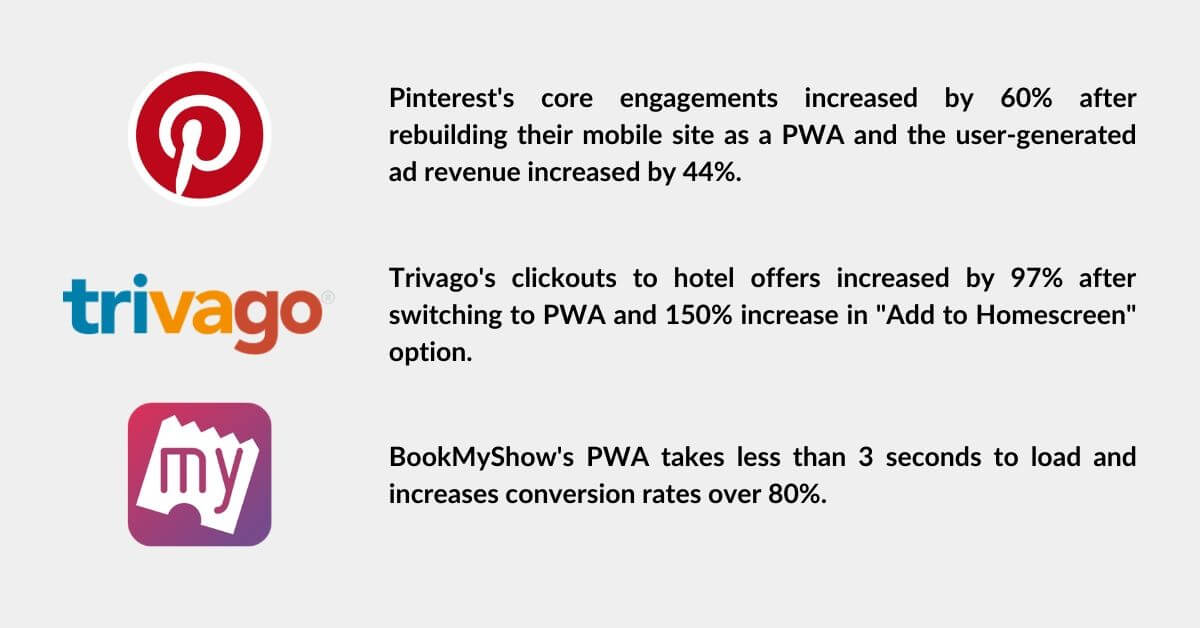
8. E-A-T & YMYL
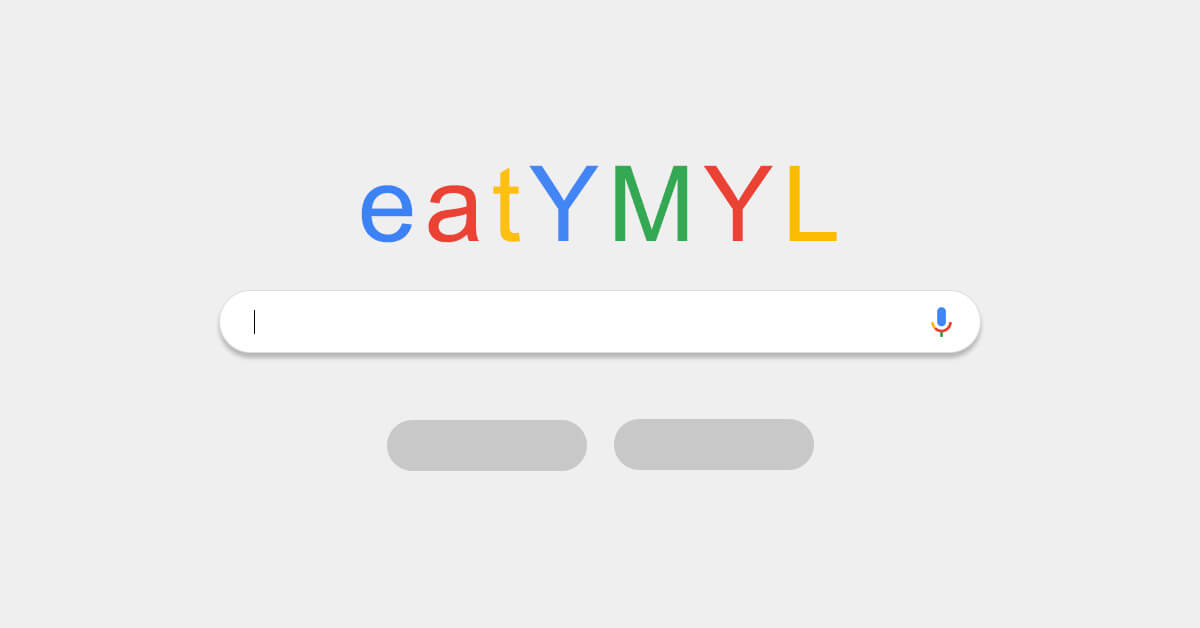
E-A-T and YMYL are the two new acronyms that have been added to the dictionary of SEO professionals after Google’s August 2018 algorithm update (a.k.a “the medic update”). They are derived from Google’s Search Quality Rating Guidelines, a 166-page long and comprehensive manual used by a team of search quality raters that determines Google’s organic search results. Technically, these guidelines don’t serve as a reference for SEO experts but they do provide us with valuable insights about what Google’s human search evaluators look for in content when rating the quality of search results. Well, the answer lies in E-A-T & YMYL that play a crucial role in the search rankings.
Long gone are the days when you could rank #1 on Google in a couple of weeks. Today, you have to nurture your business by building its expertise, authority, and trustworthiness (this is exactly what E-A-T interprets). While, YMYL is a content quality rating for those pages that could potentially impact a person’s financial stability, investment, safety, health or happiness.
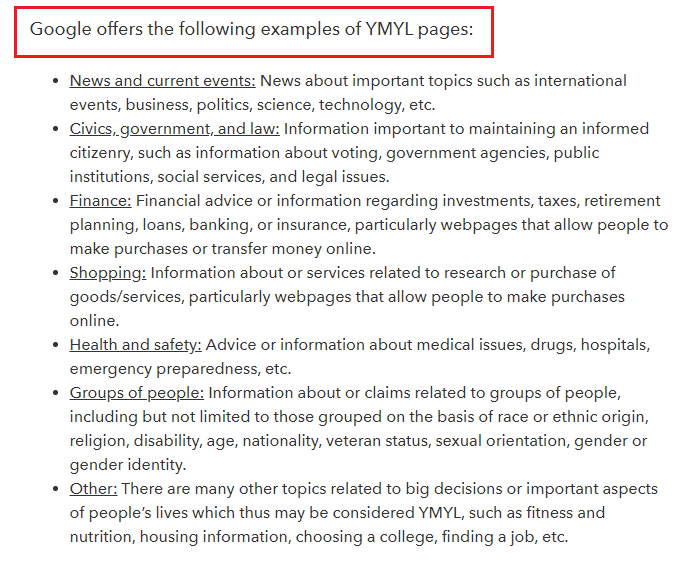
What is EAT in SEO? Why Does it Matter so Much?
EAT is an acronym of ‘Expertise, Authoritativeness, and Trustworthiness’. In terms of SEO, E-A-T is an important ranking signal that Google has started considering for organic search results. In other words, you have to produce content that is not only relevant but also factually correct. For instance, if you are suffering from an ailment, you’ll prefer seeking a consultation from a doctor rather than your friend. Fortunately, Google feels the same way. That’s why it has made clear that it wants to rank only those content that is written by experts in their field.
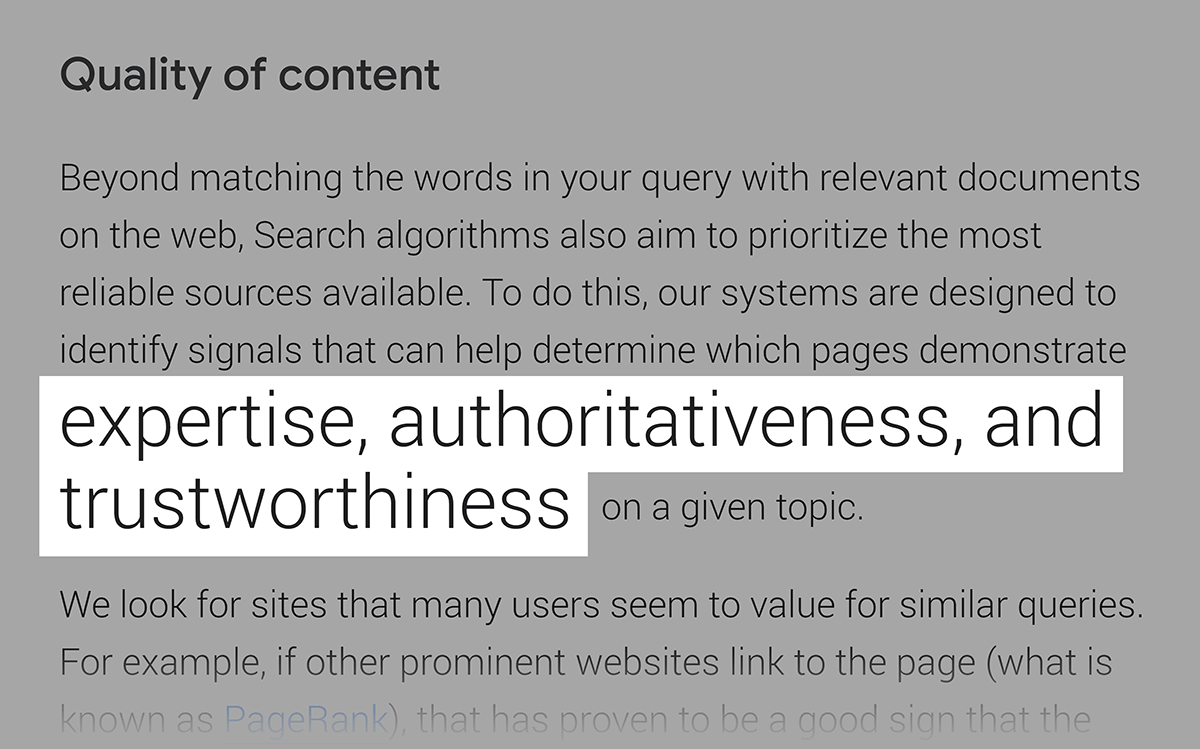
That being said, a page having higher “E-A-T” can outrank a page with low “E-A-T”. Always consider “E-A-T” as an important ranking factor to rank in 2020 and hire legit experts over freelancers for content creation.
How to Write Content that is EAT & YMYL Compliant
- Include the names & biographies of authors in your content – For content like blog posts, there should be an author name, a brief description about the author, and a few social handles like Linkedin or Twitter to validate whether the content is written by an expert.
- Invest time in personal brand building – If you are taking ownership of content creation, you should take out some time for building your personal reputation. Having a positive personal brand building can help you outrank others in your niche.
Cut down or edit a page having low “E-A-T” content – A web page having low E-A-T score may not influence the E-A-T of other pages but it can severely harm your overall site’s reputation. Therefore, it makes sense to either remove or edit such pages to improve your E-A-T score. For instance, if it is a YMYL site, you can introduce an expert author. - Invest in technical security – Trustworthiness does not always mean accuracy or reputation. It also means security. An eCommerce store without an SSL layer has higher chances of ranking lower in organic search results.
- Always moderate user-generated content – YMYL sites featuring user-generated content should be edited by experts or moderated with warnings and links to only credible sources.
9. AI and Machine Learning are Becoming the New Norm
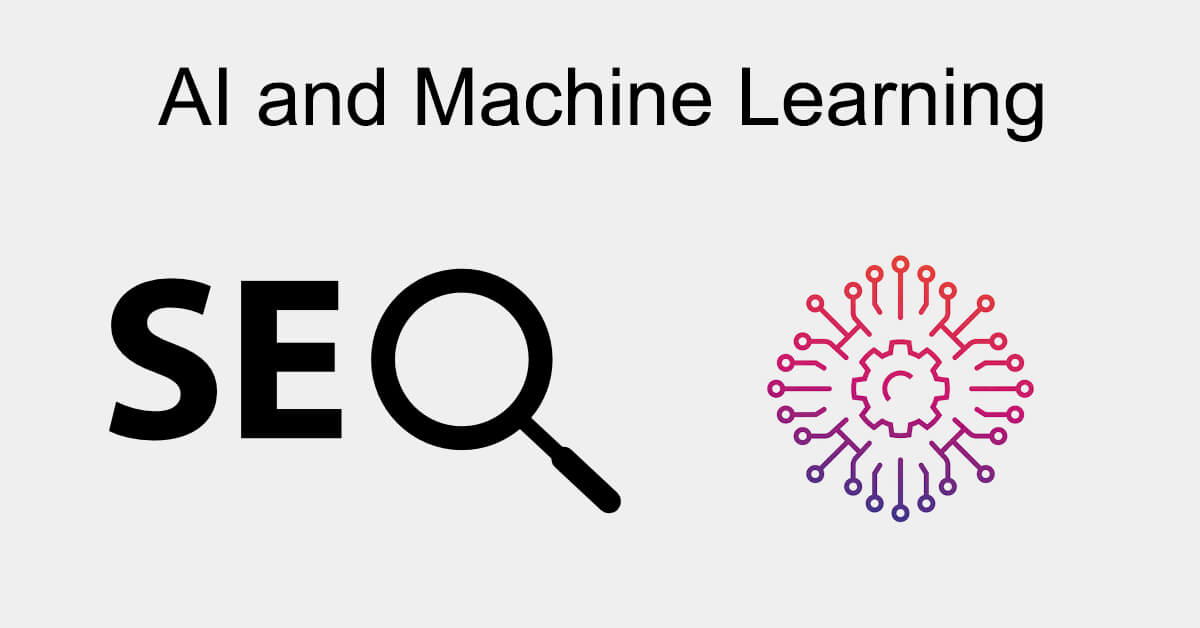
Since the arrival of Google’s Rankbrain, it’s been clear that artificial intelligence and machine learning will change the face of the SEO industry. Even after 5 years of its release, RankBrain is playing a vital role to determine the most relevant and accurate search results. With every passing day, this machine-learning based search algorithm is becoming smarter in understanding complex search queries of users. In short, it’s safe to say that Google search algorithms are becoming more human-friendly.
How Artificial Intelligence (AI) Can Help in SEO
AI can supercharge your SEO in primarily 3 key areas:
- Insights
- Automation
- Personalization
Insights: Artificial intelligence can help SEO strategists process and interpret large volumes of data to make informed decisions. Some key tasks where AI can be helpful in SEO include site performance analysis, market trends analysis, competitor insights, customer intent reports, SERP performance, and much more.
With access to years of users’ search data, the advanced search engine algorithms have started to predict user behavior making SERPs very relevant.
Automation: SEO is a time-intensive job that demands your attention for a longer period of time. Fortunately, with the help of AI, you can automate some tasks and free up your time for the core areas that require your expertise like strategy and content creation. Some tasks that can be automated in SEO include technical audits, keyword research, content distribution, tag management (For example Google Tag Manager), and many more.
Personalization: Search personalization has been around for years but in the past few years, search engines have become more sophisticated. Therefore, it becomes vital for marketers to move beyond traditional SEO and leverage AI to map content that meets different states of user intent.
Here’s how marketers can use AI for personalization:
- Create content that resonates with the customer journey, persona, and delivery mechanism.
- Improve engagement, UX, and conversions through personalization. Don’t hesitate to take cues from Amazon, if you are operating an eCommerce store.
- Create semantically specific pages to match customer intent and queries
- Use AI-backed tools to deliver content to the right people, on the right networks, and at the right times.
Final Words
SEO is the need of the hour for businesses both large and small alike. If you want to beat the competition, you must be aware of the latest trends that can bring an influx of visitors to your site. Fortunately, in this insightful post, we have covered everything that can be helpful for improving your organic search rankings in SERPs for 2020. In case, if you struggle in implementing any strategy, you may seek help from dedicated SEO experts. Connect with industry experts by dropping a line to info@suntecindia.com

